Contents
Vulvitis is a disease that can develop not only in adult women, but also in very young girls. Among other gynecological diseases diagnosed in childhood, vulvitis accounts for 70%. The average age of affected children ranges from 1 to 9 years. Immediately after the appearance of the first symptoms of vulvitis, it is necessary to begin treatment, since the disease threatens the development of serious complications. In the future, this may affect the quality of the reproductive function.
Vulvitis – what is it?
Vulvitis is an inflammation of the vulva. The vulva is understood to mean all the external genital organs, including the external opening of the urethra, the clitoris, the entrance to the vagina, the small and large labia.
As an independent disease, vulvitis rarely develops. Most often it is combined with inflammation of the vagina and is called vulvovaginitis.
Classification of vulvitis
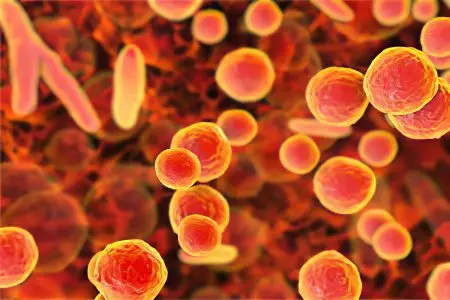
Vulvitis can be acute (the disease lasts less than a month), subacute (the disease lasts no more than 3 months) and chronic.
Depending on the age of a person, there are such types of vulvitis as:
Infantile vulvitis (the disease develops in a child under one year old).
Children’s vulvitis (the disease develops at the age of 1-8 years).
Prepubertal vulvitis (the disease develops in the period from 8 years to the onset of the first menstruation).
Pubertal vulvitis (the disease develops after the onset of menstruation).
Vulvitis can be caused by infectious agents, including opportunistic and pathogenic flora. Sometimes the disease has a non-infectious origin, for example, after the introduction of a foreign body into the vagina, with allergies, against the background of a burn, after an injury, with metabolic failures.
Infectious vulvitis can be specific (the cause of the disease is pathogenic flora) and nonspecific (the cause of the disease is pathogenic flora).
Vulvitis may be primary. In this case, the inflammatory factor enters the body from the outside. Also, the disease can be secondary. At the same time, the penetration of microbes into the vulva of a woman occurs from other foci of inflammation that are present in the body, for example, from carious teeth, from inflamed tonsils, etc.
Causes of vulvitis

The probability of developing the disease in the female is high, which is associated with the peculiarities of the physiological structure of their genital organs. Immediately after the birth of the girl, her vagina remains sterile. Settling with conditionally pathogenic flora occurs only after a week.
Before puberty, the environment in the vagina will be alkaline or neutral, as it does not contain bacteria that produce lactic acid.
Since there is no acid, local protection is reduced. It is easier for infectious flora to infect the vulva and cause inflammation. In addition, at a young age, there are few sweat and sebaceous glands in the vulva, the genital slit is not completely closed, and the skin is vulnerable and tender. All this increases the likelihood of developing vulvitis.
Causes of primary nonspecific vulvitis
Nonspecific vulvitis develops due to the activation of opportunistic flora, which is always present in small quantities in the vagina. Fungi, anaerobic bacteria, proteus, etc., can provoke inflammation.
If a woman suffers from chronic diseases, for example, she has a pathology of the genitourinary system, hormonal disorders, diabetes mellitus, then the likelihood of developing nonspecific vulvitis increases.
As for girls, the more often they suffer from acute respiratory viral infections, tonsillitis and tonsillitis, the more likely they have inflammation of the external genitalia.
Sometimes parasites are the cause of the development of a nonspecific form of the disease. In particular, pinworms are capable of carrying pathogenic flora.
The ingress of foreign bodies into the genitals, for example, blades of grass, sand, insects – all this can lead to inflammation.
Other factors in the development of the disease include: taking antibiotics, hypovitaminosis, immunodeficiency. In general, any causes that contribute to a decrease in immunity can lead to vulvitis.
Causes of allergic atopic vulvitis
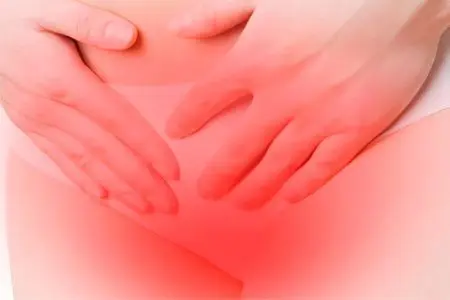
Sometimes women can develop allergic vulvitis. It is also called atopic vulvitis.
The following reasons can provoke an inflammatory reaction:
Eating foods that a woman is allergic to. So, citrus fruits, chocolate, strawberries are considered allergenic.
Use of intimate hygiene products that contain allergenic fragrances and fragrances.
Wearing underwear made of synthetic materials.
In childhood, vulvitis can be triggered by diaper dermatitis.
Excessive hygiene with frequent washing.
Failure to comply with hygiene rules, sharing household items with other people, such as towels.
The disease can be caused by infectious microorganisms, sexually transmitted.
Specific agents that can provoke vulvitis include:
Chlamydia.
Trichomonas.
Gonococci
Ureaplasma.
Viruses of genital herpes.
Papillomavirus.
Tuberculosis bacillus.
Diphtheria stick.
fungal flora.
The causative agents of such diseases as: chicken pox, scarlet fever and measles.
In infancy, vulvitis may be the result of an infection that the child received during childbirth, when passing through the genital tract of a sick mother. Also, transplacental infection cannot be ruled out.
Symptoms of vulvitis
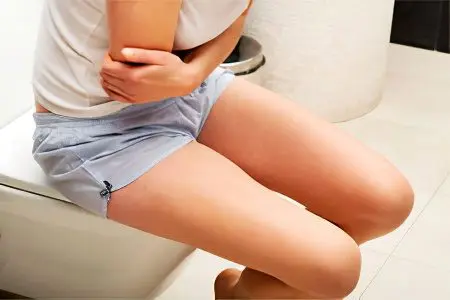
Acute inflammation manifests when an infection enters the damaged mucous membrane.
Outwardly, acute inflammation is expressed in redness and swelling of the labia. Edema can spread to the perineum and inner thigh.
When pus constantly leaks from the vagina, this leads to maceration of the tissues of the vulva. The skin becomes soft, swollen and loose. This aggravates the course of the disease. Also, excess leucorrhoea may begin to stand out from the vagina.
If the vulvitis was caused by Trichomonas, then the woman has intense itching in the perineum, the vulva and vagina swell. The discharge becomes yellow, foam appears in them.
Provided that the vulvitis is a consequence of the pathological activity of fungi of the genus Candida, the patient comes to the fore with severe itching. The discharge will contain white crumbs and flakes resembling cottage cheese.
If inflammation develops due to Escherichia coli, then the discharge becomes viscous, turns yellow-green. They give off an unpleasant odor.
A woman combs the genitals, which will lead to the formation of ulcers that fester and do not heal.
If there is no treatment, then acute vulvitis becomes chronic. The main symptoms of the disease lose their intensity. Whites continue to stand out from the vagina, but their number decreases. From time to time, the disease may worsen.
Diagnosis of vulvitis

To make a diagnosis, a person will need to go through the following procedures:
Visiting a doctor, taking an anamnesis.
Studying the patient’s medical history, diagnosing chronic pathologies, allergies, etc.
Gynecological examination. During its implementation, the doctor will see swollen and reddened genitals, the presence of pathological discharge.
Recto-abdominal examination. This procedure allows you to identify foreign bodies in the vagina.
Vaginoscopy. If vaginitis develops in a virgin, then this procedure allows you to perform an examination of the genital organs without damaging the hymen.
Submission of urine for analysis. This will clarify the presence of inflammation of the urinary system, which is often combined with vaginitis. Perform analysis according to Nechiporenko, general analysis and bacteriological examination of urine.
Donating blood for a general analysis.
Surrendering feces to detect pinworm eggs in it.
Ultrasound of the pelvic organs.
Taking a smear from the vagina for pathogenic microflora.
If necessary, PCR and serological testing are prescribed, these methods are highly specific.
Blood donation to determine the level of glucose in it.
If a woman has concomitant diseases, then she needs to consult narrow specialists.
Treatment of vulvitis

To cope with vulvitis, the patient is prescribed complex treatment. Therapy largely depends on the cause of the inflammation.
Compliance with diet and treatment regimen
In the acute period of inflammation, you need to give up work or study. Women are shown bed rest. If the disease is severe, then hospitalization may be necessary.
The menu includes alkalizing products, including: vegetables, mineral water, milk. Smoked meats, fatty broths, fried meat, marinades, pickled foods, citrus fruits, tomatoes are excluded from the diet.
If the disease is of an allergic nature, then it is required to eliminate from the menu products that can cause an inflammatory reaction. This applies to honey, eggs, seafood, chocolate, nuts, berries, etc.
Local Therapy
Local therapy of infectious vulvovaginitis involves the use of drugs in the form of vaginal tablets, suppositories or capsules.
You can use antiseptic preparations in finished form. The procedure should be carried out at least 3 times a day.
An ointment with an antibacterial component is applied to the genitals.
Taking medications internally
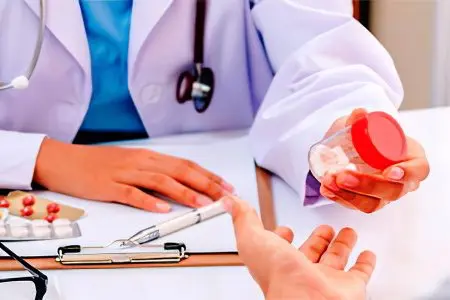
Antibiotics for vulvitis are prescribed depending on which pathogenic flora caused the development of inflammation. In severe cases of the disease, drugs are taken orally.
If a person has a disease caused by the growth of fungal flora, then he is prescribed antimycotics.
If trichomonas or gonococci are sown in the patient, then the doctor prescribes the appropriate treatment, after confirming the tests.
Broad-spectrum antibiotics are prescribed for vulvitis caused by chlamydia and mycoplasmas.
Hygiene measures
Key recommendations:
After each urination, you need to wash the perineum. Movement should be directed from front to back.
Underwear should be changed twice a day. It should be washed in hot water using hypoallergenic products and rinsed thoroughly.
Wash with soap once a day. Doing this more often is not recommended so as not to overdry the mucous membrane of the genital organs.
Do not use scented powders or oils on infants.
Linen should be made from natural materials.
All family members must have their own towels.
General recommendations
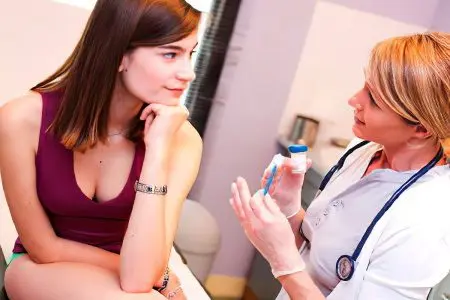
To reduce the intensity of inflammation and relieve swelling from the tissues, antihistamines can be used. If the vulvitis is of an allergic nature, then the drugs are used for topical application. To do this, choose them in the form of an ointment or gel.
Auxiliary areas of therapy:
Taking sedatives.
Taking vitamins.
When the disease often recurs, you need to take estrogens. They are used for local processing. They contribute to the speedy recovery of damaged tissues. For this purpose, experts recommend Estriol and Folliculin.
After the symptoms of the disease can be stopped, you need to include sour-milk drinks in the menu. They allow you to normalize the microflora of the vagina and intestines.
If antibacterial drugs had to be used to treat vulvitis, then patients are prescribed antifungal drugs.
Treatment of chronic diseases
It is not enough to direct efforts only to the treatment of vulvitis. If foci of infection remain in the body, then after a while the inflammation will recur. Therefore, it is important to get rid of carious teeth, cure diseases of the urinary system, etc.
If vulvitis develops against the background of parasitic invasion, then the patient is prescribed anthelmintic drugs.
If there is a foreign body in the vagina, then it must be removed. Then the vulva is treated with an antiseptic solution.
Complications of vulvitis
It is impossible to ignore vulvitis, since the disease threatens with serious complications:
Adhesion and adhesion of the labia minora. This pathology requires the help of a surgeon.
Vaginal atresia. In this case, the labia minora and the vagina are glued together.
Cystitis. Inflammation of the bladder is manifested by intense pain during urination.
The formation of scars in the place where there were ulcerative defects.
Imbibition. This complication is manifested in the blue of the external genitalia. This color can remain in a woman for the rest of her life.









